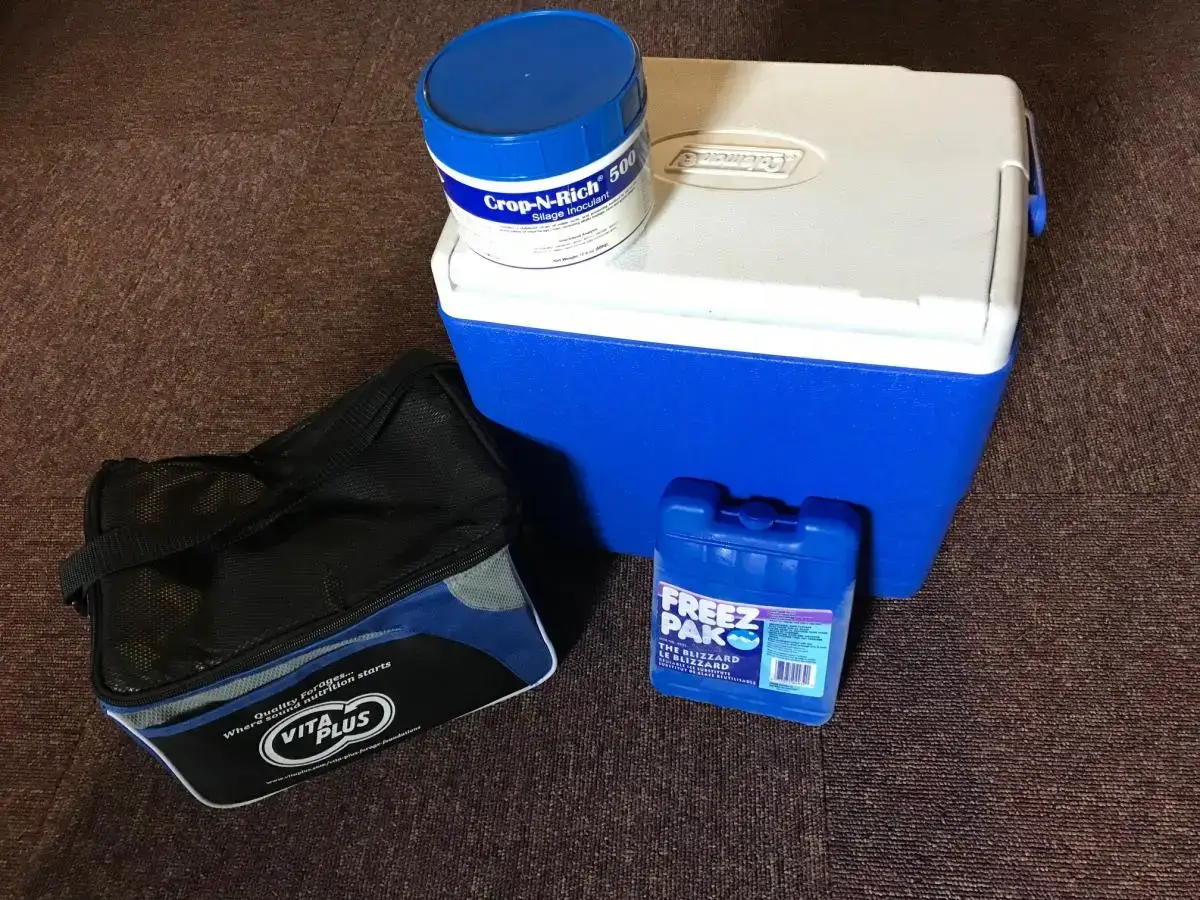
Quick tip: Transporting inoculants
 By Jon Urness, Vita Plus national forage specialist
By Jon Urness, Vita Plus national forage specialistAn incredible number of forage management practices must go right to produce quality feed for livestock. This starts with making the proper seed, fertilizer, herbicide, tillage and planting decisions. Growing season can bring challenges, such as weed control, disease and insect threats, fertility choices, and, of course, weather. Then, when harvest approaches, you need to make sure you have enough storage space for the crop, equipment is tuned up, your labor is ready and timing is right. You also need to make sure you have enough bacterial inoculant on-hand before you head out to the fields.
While many producers are concerned with making sure all equipment is prepared for harvest, proper inoculant handling and transportation to the field is often overlooked. When it comes to your inoculant, you need to make sure you have a plan in place before you hit the fields.
First, decide well ahead of harvest season what type of inoculant will get the job done for your operation. If it’s a matter of promoting a rapid pH drop and quick fermentation, you’ll look at one kind of inoculant, such as Vita Plus Crop-N-Rich® inoculant. If aerobic stability is a concern (the need to help keep feed cool as it’s being fed), then you’ll look at an entirely different inoculant, one that likely contains L. buchneri bacteria, like Vita Plus Crop-N-Rich Buchneri inoculant.
Another reason we mention inoculant is to prompt producers to consider how they transport those canisters, bottles or packets of inoculant from storage to the field. The way silage inoculants are stored and transported can have a profound influence on their performance and, ultimately, the quality of forage you feed your livestock.
Storage of your inoculant
Whether you pick up your inoculant at the feed store or it’s delivered by the supplier, make sure you consider where it will be stored prior to use. Every year we hear about inoculant left and forgotten in a machine shed. This is especially disastrous for inoculants that require refrigeration. Designate a regular spot for inoculant to be stored, preferably a refrigerated unit, even for inoculants that do not require it. Remember, these are live organisms and need to be alive when applied to the forage to work.
 Taking inoculant to the field
Taking inoculant to the field
Once again, have a plan. The best managers have an insulated cooler for transporting inoculant. Many will keep ice packs in that cooler. Even a small, collapsible cooler, like the one on the left in the picture to the right, is helpful, but for larger quantities, a larger, hard-sided cooler is ideal. The worst place to transport inoculant is the dashboard or seat of a vehicle. Temperatures can soar to more than 120 degrees F in those places.
Three requirements
Common sense can go a long ways for handling and transporting inoculants, but Bob Charley, Lallemand Animal Nutrition forage products manager, adds these three suggestions:
- Keep inoculants away from heat and direct sunlight
- Keep them away from moisture
- Keep packaging sealed until use to limit oxygen exposure
| Category: |
Forage Foundations Forage inoculants |

